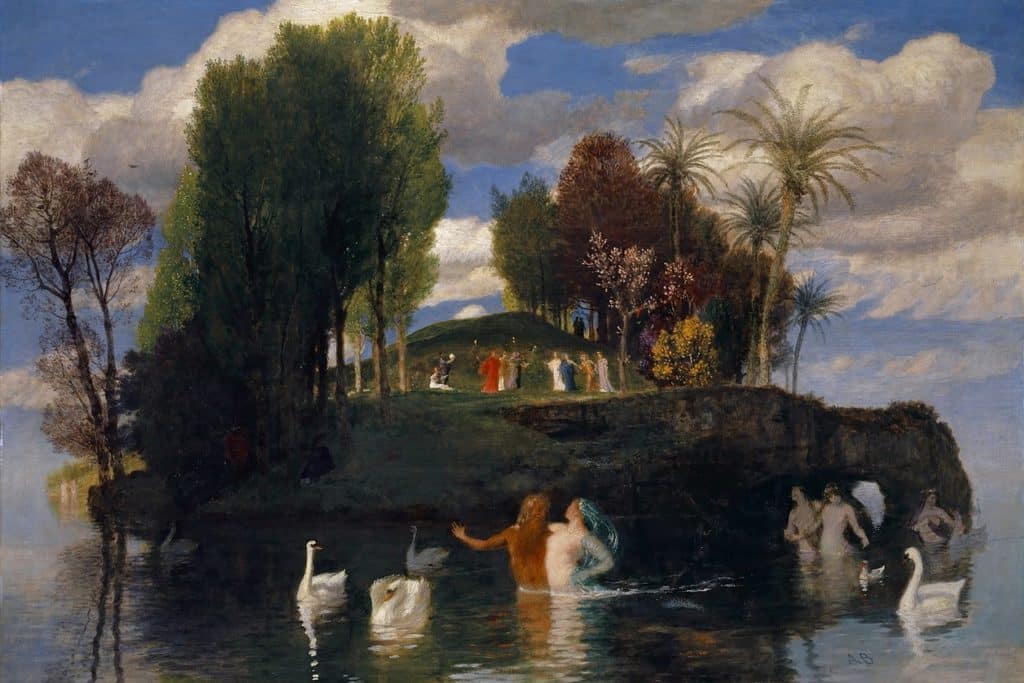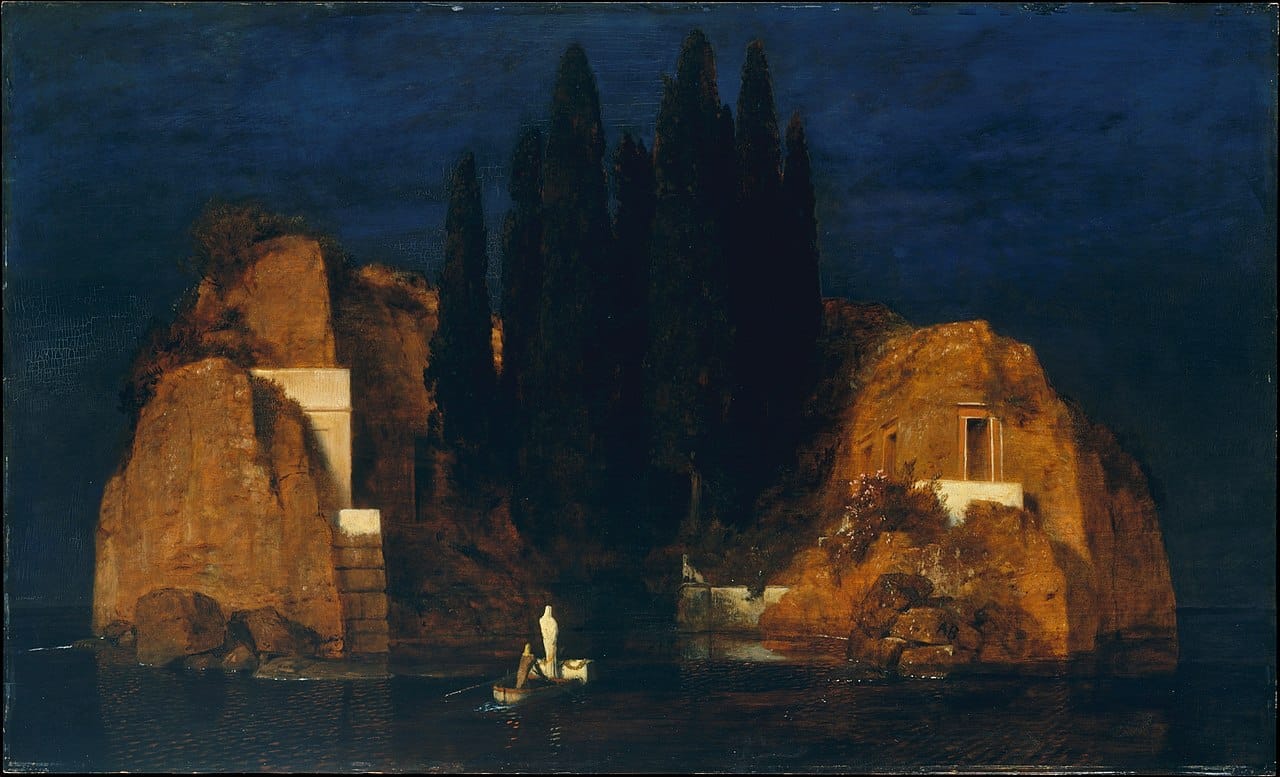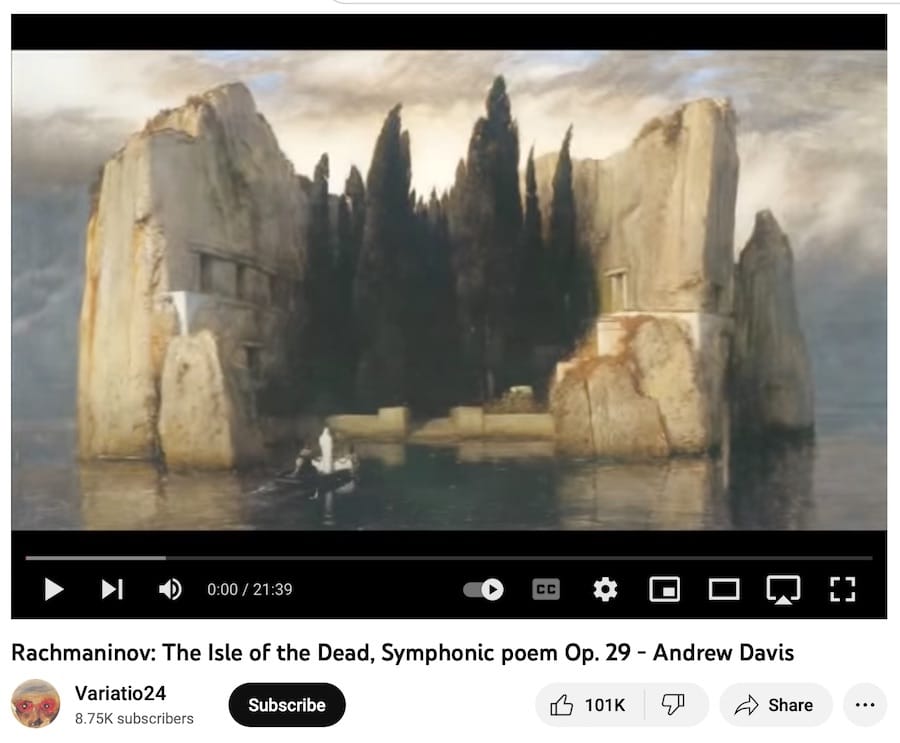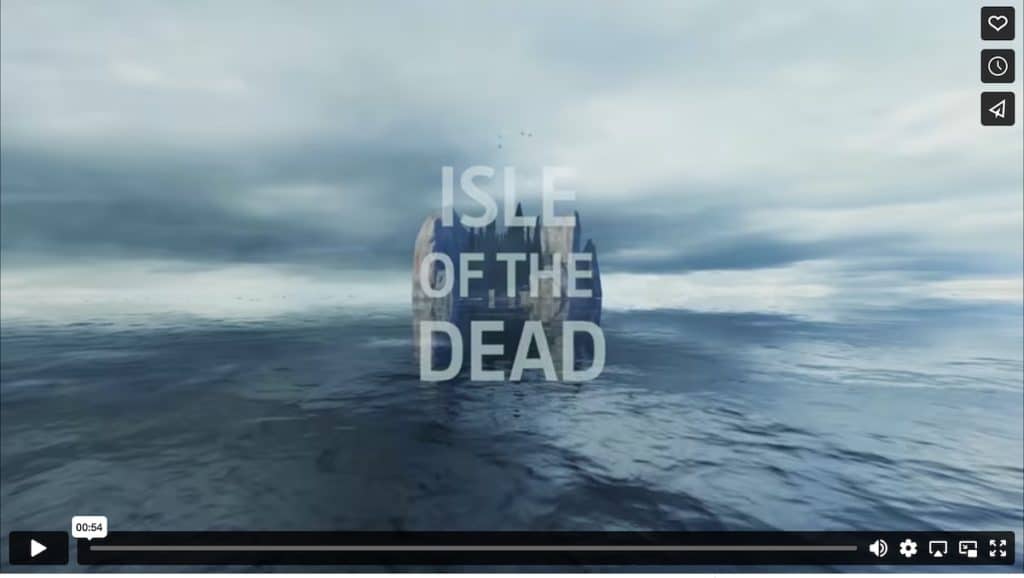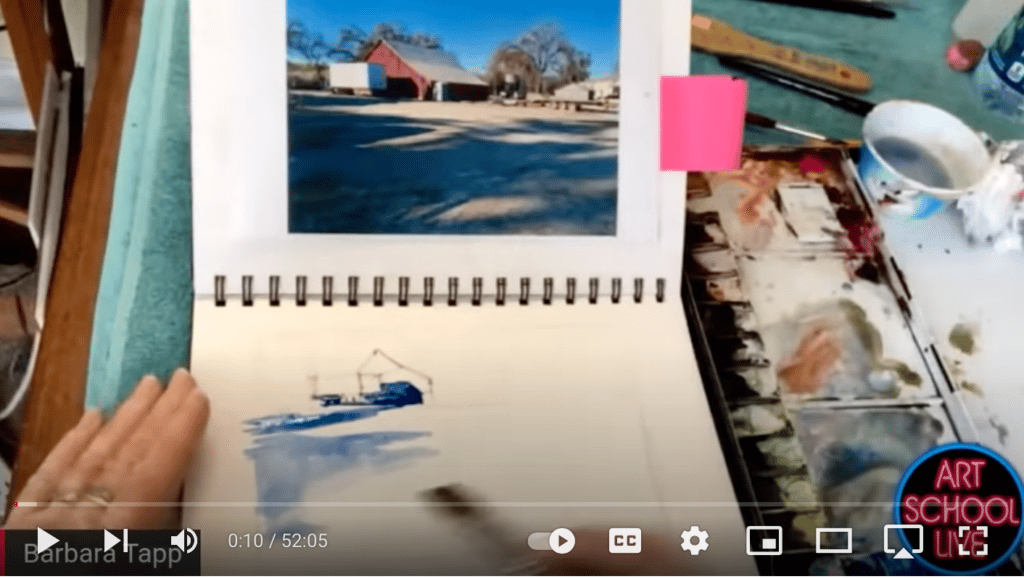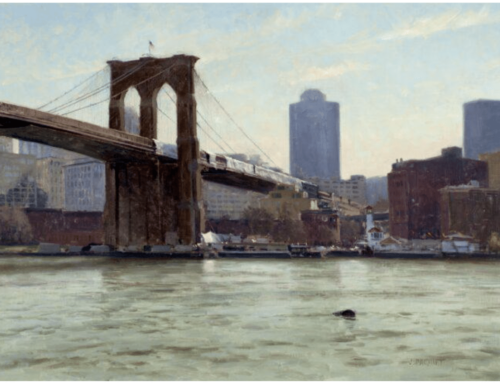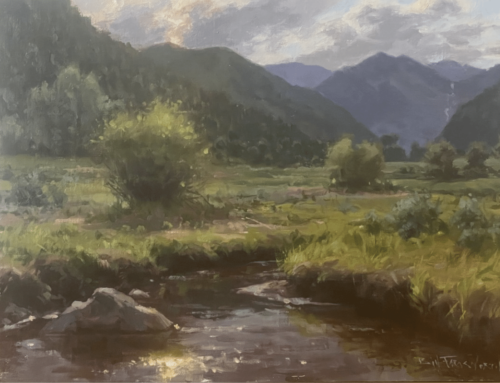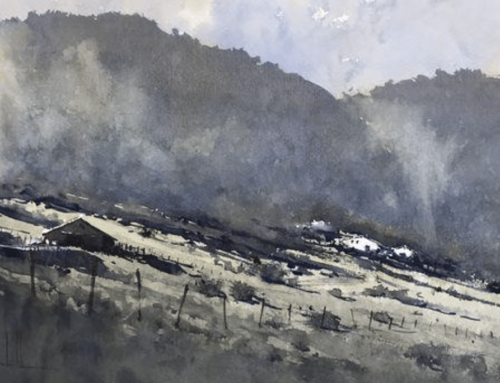To view Swiss Symbolist Arnold Böcklin’s famous Isle of the Dead in the U.S., you must enter a small, softly lit room in the Metropolitan Museum of Art. There you will find a black leather bench. The feeling is of something you must contemplate quietly, in silence – something you must do alone.
Böcklin’s patron Marie Berna commissioned this painting in 1880 as a memorial to her late husband. It is based on an unfinished canvas that she saw in the artist’s studio in Florence; at her request, he added the draped coffin and the shrouded figure to the rowboat in the foreground. Böcklin later wrote to her, “you will be able to dream yourself into the world of dark shadows.” Between 1883 and 1886, he painted at least four additional versions, each slightly different.
Still, he probably had no idea this painting would be so inspiring to so many. Böcklin’s masterpiece became one of the most often reproduced paintings in the history of art. It fascinated Lenin and Hitler, Freud and Clémenceau and inspired both Dali and Scorsese. The painting represents the final journey as described in Greek mythology, as the boatman Charon accompanies the dead to the underworld on the other side of the river Styx, which, once crossed, erased all memory of mortal life. Novelist Vladimir Nabokov in the 1930s that a reproduction of it could be found in virtually every middle class home in Berlin.
It was one such black-and-white print that inspired Sergei Rachmaninoff to compose his sweeping and immersive symphonic poem, Isle of the Dead in 1909. The 20-minute piece opens with an ominous, wave-like, minor key melody then gets progressively louder and more intense, with introspective moments of calm, as the approaching island looms. Listen by clicking the linked image below.
Most recently, the painting became even more immersive as a virtual reality experience that swept up numerous awards at film festivals where it was shown in 2017. You can see some cool screen captures here and view the trailer, with a selection from Rachmaninoff”s composition, here.
Clearly, there is something about this painting that draws us in and intrigues us despite the eerie subject matter. Perhaps it’s because of what this image is not – it isn’t sensational, nor in-your-face, morbid, or macabre. It is at once lyrical, mysterious, quiet, and dignified, with a graceful otherworldly beauty – literally a timeless image. Böcklin’s strange, rockbound island, like the thought of the afterlife itself, rises somewhere before us on a mist-shrouded horizon, forever out of reach to human knowledge.
Of the so-called “New York version” painting, the Metropolitan Museum has this to say:
“Unlike his Impressionist contemporaries, who painted directly from nature, Bocklin painted dreamlike, fantastical scenes. He’s taken inspiration from nature (the Mediterranean and Italian landscape) but he’s transformed what he saw into a painting with deeper symbolic meaning.
“Dark cypress trees, tomblike rocks in the cliffs, draped coffin and … it addresses the ultimate mystery, the passage of life into death. And it takes us right up to the brink; we don’t know what awaits the figure in the boat once they alight onto the island.”
 In one of several of Dali’s bizarre homages, a strange, giant beaked figure draped in a shroud dominates
In one of several of Dali’s bizarre homages, a strange, giant beaked figure draped in a shroud dominates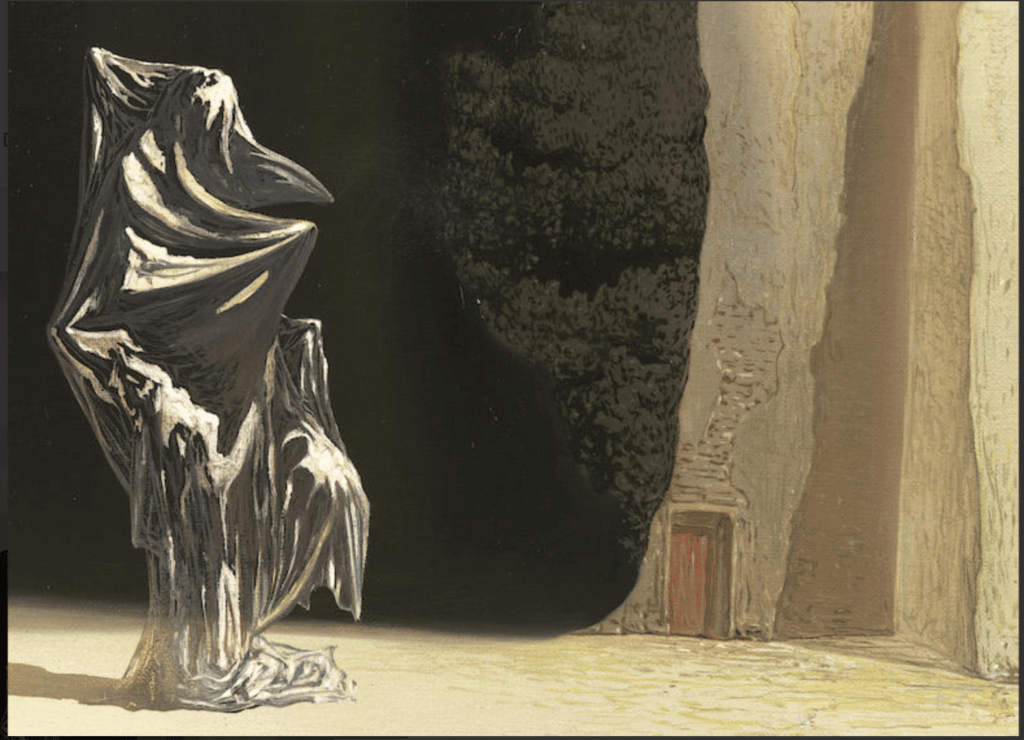 the foreground. It appears to be brooding on the small door in the rock face, rather like a cat keeping watch over a mouse hole.
the foreground. It appears to be brooding on the small door in the rock face, rather like a cat keeping watch over a mouse hole.
